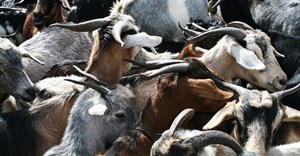
Subscribe & Follow
New wool season opens on Wednesday
The season opens in the wake of slower global economic growth and uncertainty as to how this will affect consumer demand for clothing.
In Australia, where auctions have already commenced, the market initially lost some ground but last week recouped its losses, mainly as a result of a weaker Australian dollar.
Analysts hope that the sharp decline in the production of apparel wool will counterbalance a possible decline in demand at retail level. Global production is forecast to fall by 7% year-on-year.
South Africa was the only one of the four major wool-exporting countries to post an increase in production. Good climatic conditions in most wool-growing areas contributed to the 3.6% increase in local production to around 48,6 million kg.
In the other three exporting countries Australia, Argentina and Uruguay production was down on the previous season and is expected to fall further this season.
Production in Australia, the world's largest apparel-wool producer, dropped by around 12% over the past season and is expected to decline a further 7% this season to 385 million kg its lowest level in 60 years.
"The major reasons for this decline are the high global grain prices that have provided a strong incentive for farmers to plant addition winter crops, reducing the area for sheep grazing, and continuing dry conditions in some parts of eastern Australia and in Tasmania," Cape Wools said.
Poor seasonal conditions in South America are to blame for the decline in sheep numbers.
Patagonia, the main Merino wool production area in Argentina, has experienced a prolonged drought and production is expected to fall 8%.
Uruguay has also been experiencing poor seasonal conditions, resulting in a smaller lamb crop and a sell-off of wethers.
Production is forecast to drop 5%. Exchange rates will continue to play a major part in determining price levels in the new season.
Published courtesy of










